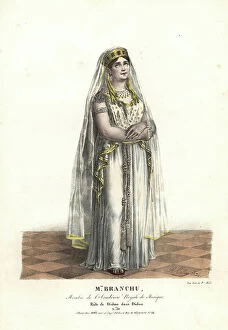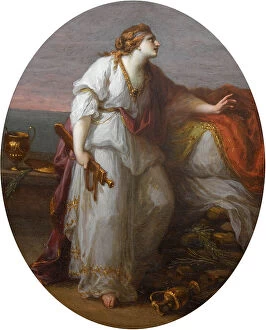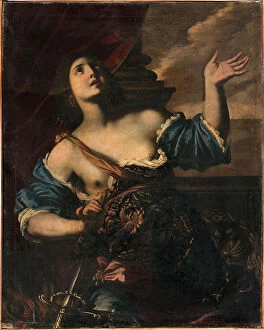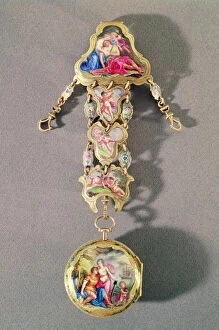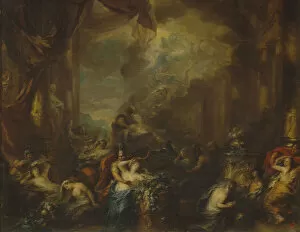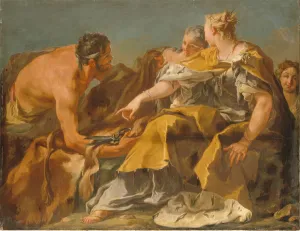Queen Of Carthage Collection
"Queen of Carthage: A Tragic Tale of Love and Loss" In the realm of ancient legends, one name stands out as a symbol of passion and despair - Dido, the Queen of Carthage
All Professionally Made to Order for Quick Shipping
"Queen of Carthage: A Tragic Tale of Love and Loss" In the realm of ancient legends, one name stands out as a symbol of passion and despair - Dido, the Queen of Carthage. Her story is etched in history through various artistic depictions that capture her final moments. One such portrayal is found in Ms 1126, where we witness "The Suicide of Dido by the sword. " This haunting image reflects her heart-wrenching decision to end her life after being abandoned by Aeneas. Similarly, Phyllis meets a tragic fate in another artwork titled "Suicide of Phyllis by hanging, " highlighting the theme of lost love and its devastating consequences. "Dido on the Pyre" showcases an oil painting from 1775 that immortalizes her ultimate sacrifice. The flames engulfing her body depict a woman consumed by grief but refusing to be forgotten. Meanwhile, a watch and chatelaine adorned with Dido and Aeneas captures their ill-fated romance in delicate gold and enamel craftsmanship. Ms 493 fol. 142 presents us with "Dido's Funeral, " taken from Virgil's epic poem The Aeneid. This poignant scene portrays mourners bidding farewell to their beloved queen as she embarks on her journey beyond mortal realms. Another page within this manuscript reveals "The departure of Aeneas and Dido's death, " emphasizing both separation and tragedy. Elliger's depiction shows Dido burning herself at the stake—a powerful image that encapsulates her desperation when faced with abandonment. In contrast, "Dido's sacrifice to Juno" painted in 1630 highlights her devotion to divine forces amidst personal turmoil. "The Death of Dido" portrayed around ca 1510-1511 evokes empathy for this forsaken queen whose heart was shattered by unrequited love. Francesco Battaglioli further explores this theme through his artwork titled "The abandoned Dido, " capturing her isolation and anguish.

